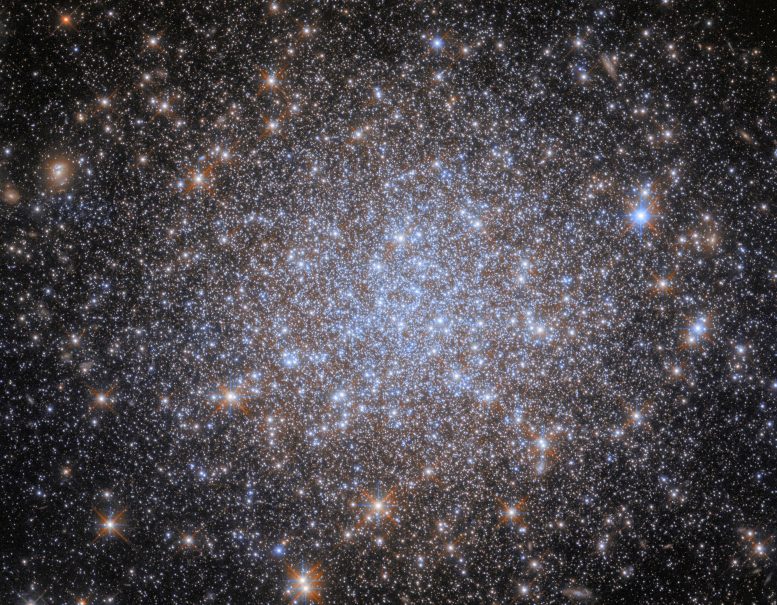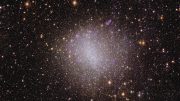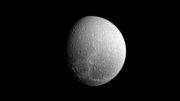
This Hubble Space Telescope image features NGC 1841, a globular cluster within the Large Magellanic Cloud (LMC). Globular clusters like NGC 1841, characterized by their density and ancient stars, serve as cosmic fossils, revealing the complexities of early galactic development. Credit: ESA/Hubble & NASA, A. Sarajedini, F. Niederhofer
NGC 1841 in the Large Magellanic Cloud showcases the early universe’s star formation, highlighting the role of globular clusters as cosmic fossils within satellite galaxies of the Milky Way.
This densely populated group of stars is the globular cluster known as NGC 1841, which is found within the Large Magellanic Cloud (LMC), a satellite galaxy to the Milky Way galaxy that lies about 162,000 light-years away. Satellite galaxies are galaxies that are bound by gravity in orbits around a more massive host galaxy.
We typically think of our galaxy’s nearest galactic companion as being the Andromeda Galaxy, but it would be more accurate to say that Andromeda is the nearest galaxy that is not in orbit around the Milky Way galaxy. In fact, our galaxy is orbited by tens of known satellite galaxies that are far closer than Andromeda, the largest and brightest of which is the LMC, which is easily visible to the naked eye from the southern hemisphere (although this is decreasingly the case thanks to light pollution).
Understanding Globular Clusters
The LMC is home to many globular clusters. These celestial bodies fall somewhere between open clusters — which are much less dense and tightly bound — and small, compact galaxies. Increasingly sophisticated observations have revealed the stellar populations and other characteristics of globular clusters to be varied and complex, and it is not well understood how these tightly-packed clusters form.
However, there are certain consistencies across all globular clusters: they are very stable and so are capable of lasting a long time, and can therefore be very old. This means that globular clusters often contain large numbers of very old stars, which make them something akin to celestial ‘fossils’. Just as fossils provide insight into the early development of life on Earth, globular clusters such as NGC 1841 can provide insights into very early star formation in galaxies.









Be the first to comment on "Galactic Fossils: Ancient Stars Whisper Celestial Secrets in the Large Magellanic Cloud"